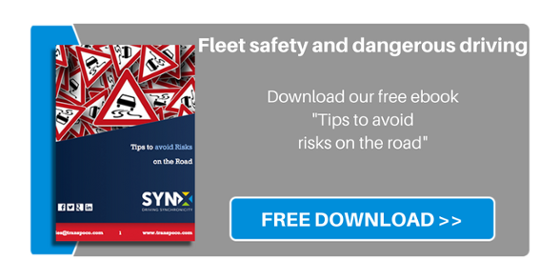
From our lengthy experience with fleet operations and companies that manage vehicles, we learned that safety and dangerous driving are never promoted enough and there is always room for improvement when it comes to talking about the hardest sections of the highway code, as even the most seasoned drivers have not always fully mastered those or are swayed by pressure to complete jobs in a manner that might compromise safety.
Roundabouts and intersections have proved particularly insidious. According to the National Highway Traffic Safety Administration of the US, 40% of all crashes involve intersections, the second largest category of accidents, led only by rear end collisions. Fifty percent of serious collisions happen in intersections and some 20% of fatal collisions occur there. Some older stats provided by AA motor insurance revealed that 45% of Irish motorists have been involved in a collision or near miss on a roundabout between 2008 and 2010. Of these, 8% admitted to being at fault. A further 72% blamed the driver of another car. Following on from this, 7% said a van or truck driver was culpable. And 3% attributed blame to a motorcyclist.
From our experience, 66% of harsh braking events occur at roundabouts. Harsh braking indicates a driver uses unusual force to stop a vehicle in order to avoid a collision and is often a symptom of aggressive or distracted driving, which can potentially lead to increased costs and claims as well as danger. Harsh braking is one of the dangerous driving metrics that can be measured with the help of a fleet management system, and reviewing them with fleet drivers is a great exercise. If you see evidence of harsh braking frequently occurring at roundabouts within your fleet, you can share best practices with your team:
- Slow down as you approach the roundabout—reduce your speed in anticipation to avoid harsh braking.
- Use the guide signs and lane designation markers to position yourself in the correct lane well in advance of the roundabout.
- When you’re first in the queue to enter the roundabout, observe traffic coming from your right and wait for a gap where you can safely merge with the moving traffic.
- Follow the flow of traffic until you are approaching your exit and use your indicators in a timely fashion when approaching your exit.
- Never stop inside a roundabout, change lane or pass other vehicles.
Hoping this might be useful for your drivers and their training! If you wish to detect dangerous driving events within your fleet and prevent them from happening, get in touch to learn more about fleet management solutions like driver behaviour alerts.





